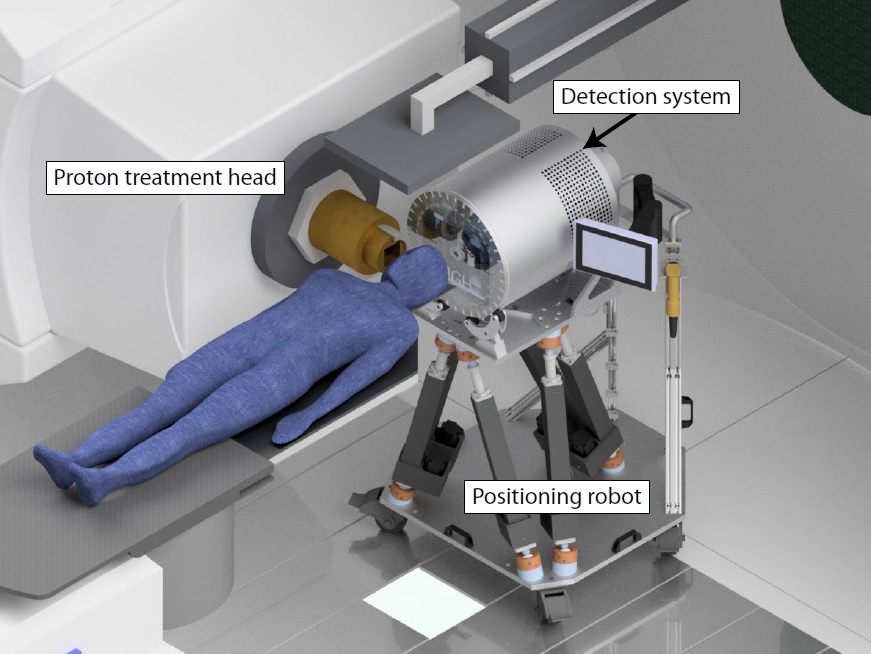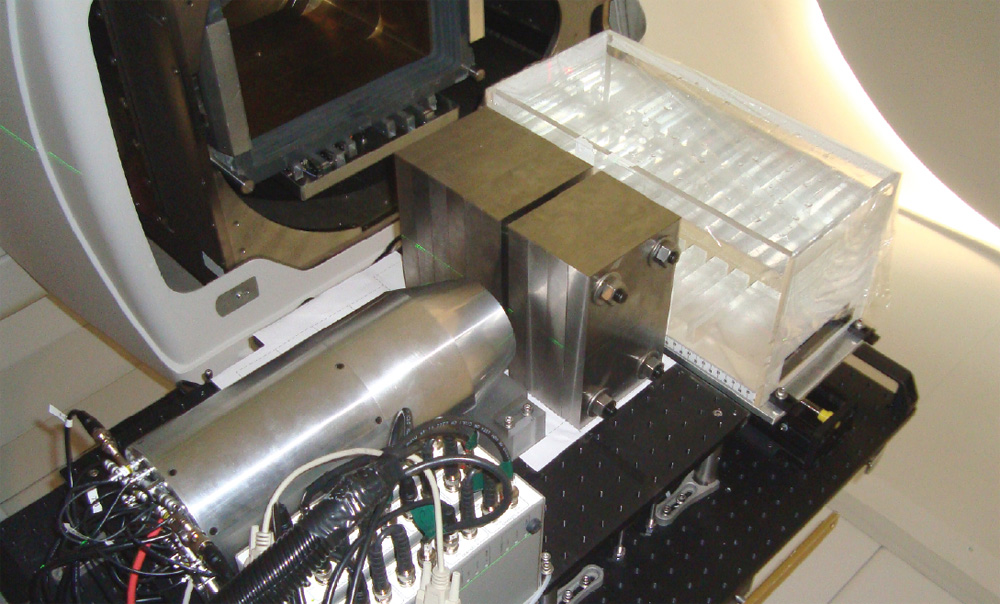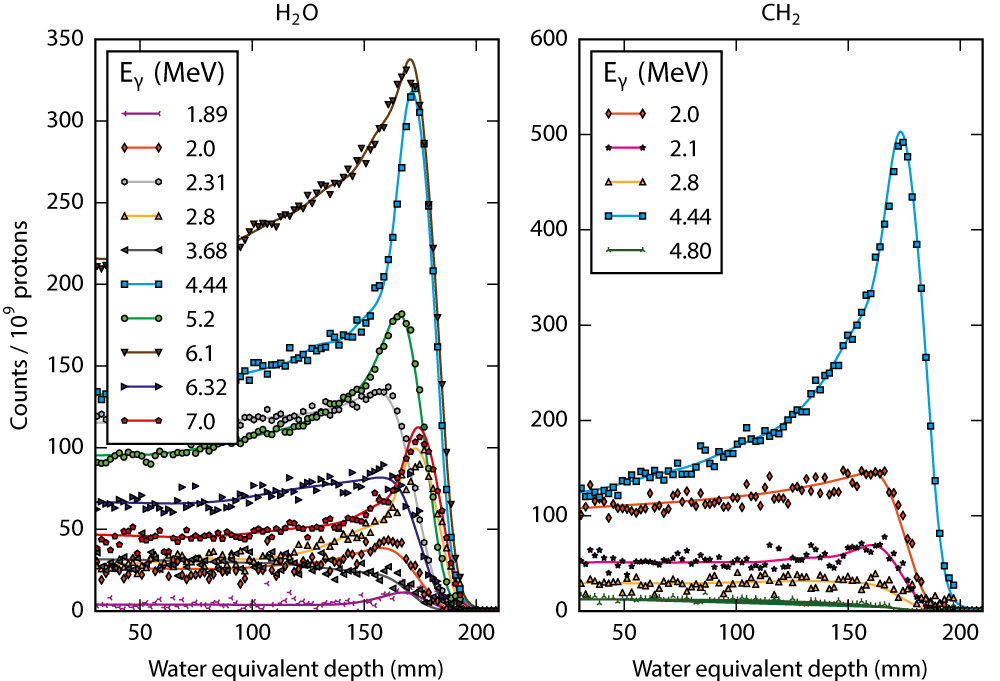During proton therapy treatments, high energy prompt γ-rays are naturally emitted as a result of proton-nuclear reactions with the patient's tissue. A large fraction of these escape the body and could therefore be used to verify the range of the proton beam. Such an in vivo range verification is desired to further improve the precision of proton therapy.
We are studying prompt γ-ray spectroscopy for range verification of proton beams. Methods have been developed to verify the absolute range by matching energy- and time-resolved prompt γ-ray measurements with models based on experimentally determined reaction cross sections. Pre-clinical experimental studies have demonstrated the feasibility of this method. We are currently developing a prototype system for clinical studies at the Francis H. Burr Proton Therapy Center.
Physics World: Precise proton range detector gets ready for the clinic

Clinical prototype system in the gantry treatment room.

Previous pre-clinical experiments.

Histograms of energy and time-resolved prompt γ-ray measured in water and polyethylene targets, performed 20 mm upstream of the end-of-range of a 165 MeV proton beam.

Measured discrete prompt γ-ray yields along a 165 MeV proton beam stopped in water and polyethylene.
Team
- Joost Verburg, PhD (project lead)
- Thomas Bortfeld, PhD
- Fernando Hueso González, PhD
- Sebastian Tattenberg
- Thomas Ruggieri
Publications
- F. Hueso-González, M. Rabe M, T. A. Ruggieri TA, T. Bortfeld, J. M. Verburg. A full-scale clinical prototype for proton range verification using prompt gamma-ray spectroscopy. Phys. Med. Biol. 63, 185019 (2018).
- J. M. Verburg and J. Seco. Proton range verification through prompt gamma-ray spectroscopy. Phys. Med. Biol. 59, 7089–7106 (2014).
- J. M. Verburg, M. Testa and J. Seco. Range verification of passively scattered proton beams using prompt gamma-ray detection. Phys. Med. Biol. 60, 1019–1029 (2015).
- J. M. Verburg, K. Riley, T. Bortfeld and J. Seco. Energy- and time-resolved detection of prompt gamma-rays for proton range verification. Phys. Med. Biol. 58, L37–L49 (2013).
- J. M. Verburg, H. A. Shih and J. Seco. Simulation of prompt gamma-ray emission during proton radiotherapy. Phys. Med. Biol. 57, 5459–5472 (2012).
